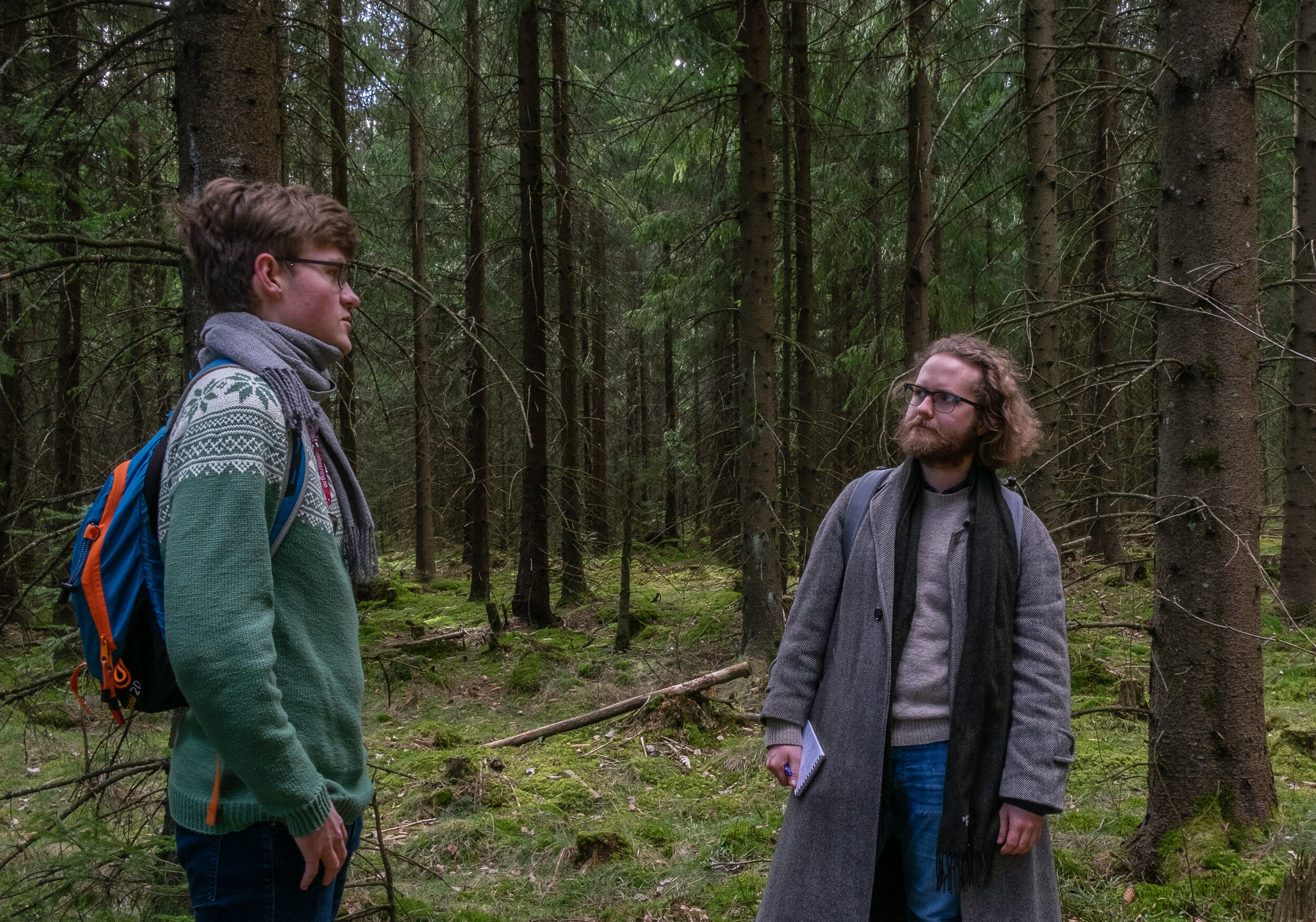"Oh, they are cutting down the Pentagon Forest?”

"Oh, they are cutting down the Pentagon Forest?”
Journalist: Benjamin Faulkner
Photographer: Lina Grünbeck
A major part of the human condition is that we cannot live anywhere, without access to a built area with a bed, roof, walls, fridge, booze cabinet, a door and a waste outlet. The Swiss architect, Le Corbusier, called a house “a machine for living in”. It’s a very important box, a life support, functioning only to sustain our most basic needs. The population of Ås is surfing the wave of Follobanen’s tsunami of new residents, and consequentially, housing developers are lining up to show new inhabitants a broad selection of residences for sale. But there is not much space here at Ås. Where should they be built? It may be time up for the forest close to Pentagon.
Initial planning
Let us go back to the 11th of November, 2019. On the website of the municipality of Ås, an alert is issued pertaining to “initial planning for detailed zoning plans and proposition of plan program for Vollskogen residential area”. This forest was already designated as an area for residential development in 2015. The municipal housing programme allowed construction of one half detached housing, and the other half townhouses. By 2023, fifty houses may be ready, and in 2026, a total of two hundred. However, dangers lurk in the dark forest. One of them is Kim André Nielsen, a student at International Environment and Development Studies.
A shady and moist place
“The branches down here are dry and dead. The forest is so dense that they must prioritize the treetop, where they actually receive sunlight.”
We’ve left the trodden path, and find ourselves in a thick, dark spruce forest. Leading us in a dark green sweater and a grey scarf, Kim André Nielsen strides through the shrubbery. From time to time, a clump of moss demands his attention. “Moss thrives at shady and moist places,” he says, pointing to the green mats of moss on the forest floor. “This whole area is a swampy forest. The north part is where they do most of the logging, so they have excavated ditches, to drain the water out of the forest. That makes it easier for the plantation trees to grow.”
Natural carbon storage
An old-growth forest, it is not. There has been human activity going on here for at least a thousand years. A local geologist has found traces from the iron age. Now, usage will intensify, and Kim André may have bad news: “In the rainforest, the trees store carbon dioxide, but in boreal woods, this is stored in subterranean root systems. You can imagine what happens when they are dug up.” Now, it’s said that only half the forest will be used, but he further explains that, "Parts of the Vollskogen are very dense. So, if you chop down a huge tree – if you’re building, for example – a domino effect can happen. Many trees in its vicinity can fall down in the same instance.”
“Load of nonsense”
After hiking through the windy woods, it’s good to come into the heat – and then straight out onto the windy balconies at Verket, seventh floor. I’ve come to talk to Anders Endor Nordengen, the platonic ideal of a local man; as well as a third-year student at urban- and regional planning studies. Outside the window, the Pentagon Forest bathes in the sun, swaying in the wind. “It’s bloody boring to look at,” he comments; his fair hair fluttering about. “It’s just a dark thicket. I’ve walked there once. My main concern, and for others who didn’t attend the participatory meeting, is noise issues from Pentagon.” Indeed, the Pentagonites celebrate the sun in the only way that can please Bacchus, the god of festive rampage: to bring forth the loudspeaker artillery and proclaim their passion for the consumption of alcohol. The problem is that all of these artillery pieces and voices are pointed in one direction.
Traffic safety
A problem that concerns both Anders and Kim André, is the amount of future traffic. Usually, around 300 cars drive in and out on the road to the parking lot. This is where the new residential area will be connected to the road network. On the proposed plan, it was supposed that an increase could be expected to 600-700 each day, but on the participatory meeting, over 1000-2000 cars were mentioned. “Imagine all the families driving to work and school. I’m concerned for traffic safety,” Kim André says. Local man Anders also expresses discontent concerning this increase: “Just look at the Meierikrysset at rush hour. Everyone from the Vollskogen have to drive through it as well.”
The Neighbours Act § 2
On my way to Verket seven, I was convinced that the student residents would be up in arms in protection of the forest. Though the Biodiversity Act is only mentioned by a minority, woe betide the newly-moved family who thinks their Saturday evening will be peaceful. In the Neighbours act, second paragraph, the wording indicates that local customs are prioritized, and the balconies of Pentagon stood there first.




